Shown here are four representations chemists use for ammonia. In the colored models, nitrogen is blue and hydrogen is white.
Click on image for full size
Windows to the Universe original artwork by Randy Russell.
Ammonia - NH3
Ammonia is a chemical compound that is a colorless, flammable gas
at normal temperatures and pressures. Ammonia is toxic, corrosive to some materials,
and has a pungent odor. An ammonia molecule
(NH3) contains three hydrogen atoms
and one nitrogen atom.
Humans use ammonia in great quantities. We manufacture more atoms of ammonia
each year than any other industrial chemical. Ammonia is used extensively in
the production of chemical fertilizers. It is also used to make explosives,
nylon, and pharmaceuticals. Ammonia is also used as a cleaner, including in
household window glass-cleaning products. Ammonia is also used as a "feedstock"
when making nitric acid.
Ammonia is found in small quantities in Earth's
atmosphere. It is produced by the decay of animal and vegetable matter that
contains nitrogen.
Nitrogen-fixing microbes convert nitrogen
in the air into ammonia in the soil as part of the Nitrogen
Cycle. This makes the nitrogen, a key ingredient in the chemistry of life,
available to plants and other organisms.
Ammonia sometimes also plays a role in removing acids
from Earth's atmosphere. Ammonia reacts with nitric acid and sulfuric
acid to form particulate
or aerosol nitrate and sulfate, removing the acids from the atmosphere within
a few days of the acids' creation.
You might also be interested in:
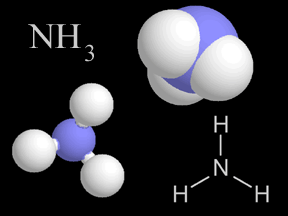
Most things around us are made of groups of atoms bonded together into packages called molecules. The atoms in a molecule are held together because they share or exchange electrons. Molecules are made
...more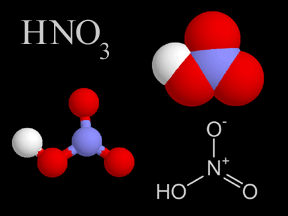
Nitric acid is a colorless, corrosive liquid and a toxic acid which can cause severe burns. Nitric acid consists of nitrogen, oxygen, and hydrogen atoms. Nitric acid, in its gas phase, is present in very
...more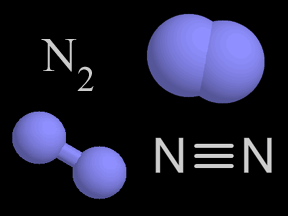
Nitrogen is a chemical element with an atomic number of 7 (it has seven protons in its nucleus). Molecular nitrogen (N2) is a very common chemical compound in which two nitrogen atoms are tightly bound
...more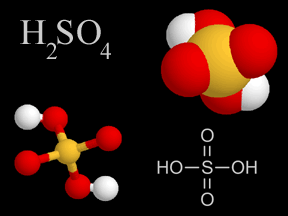
Sulfuric acid is a viscous, oily liquid and a strong acid which can cause severe burns. Sulfuric acid consists of sulfur, oxygen, and hydrogen atoms. Sulfuric acid is one of the components of acid rain.
...more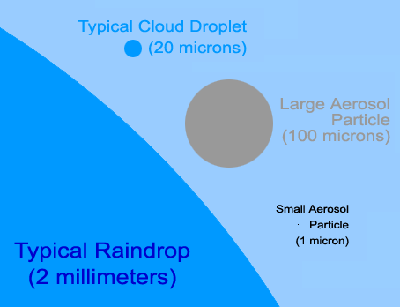
Aerosols, also called particulates, are tiny bits of solid or liquid suspended in the air. Some aerosols are so small that they are made only of a few molecules – so small that they are invisible because
...more
This picture shows us getting ready for the first local flight of the NCAR/NSF C-130 flying out of Veracruz. We flew toward Mexico City, did some measurements in the Mexico City basin, and then flew West
...more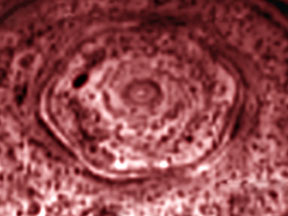
Astronomers have discovered a bizarre, hexagon-shaped feature in the clouds of Saturn near the planet's North Pole. The feature was first seen in images returned by the Voyager spacecraft in the 1980s,
...more














